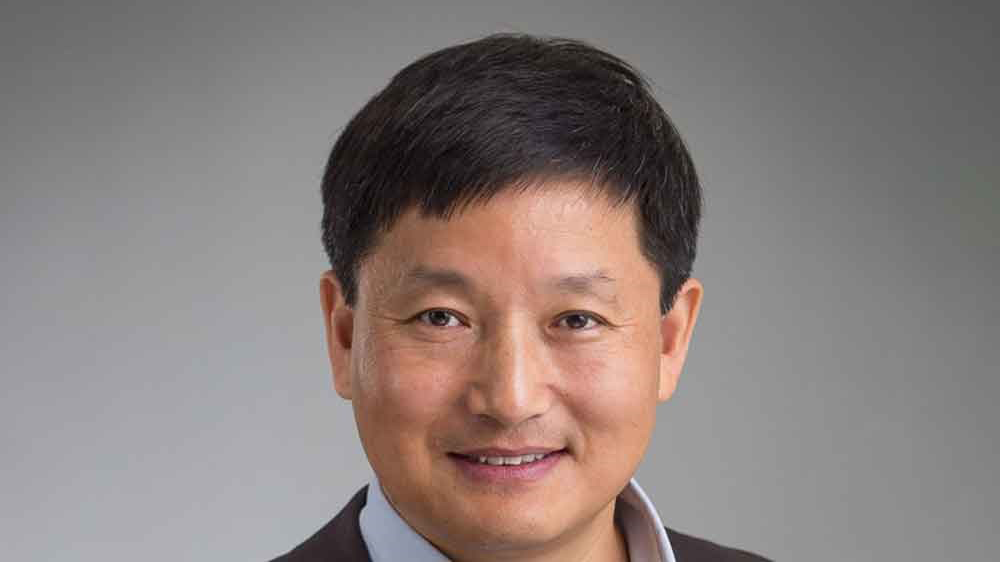
East and West: two ecosystems emerge
Regionalization creates East and West ecosystems
What’s going on in this crazy world of ours? Does the rise of populism, protectionism and polarization mean the end of multilateralism and globalization? The answer is “yes and no” but mainly “no” for the electronics industry. Mycronic sees a continued trend towards global, interconnected ecosystems, but there will be a clearer division between East and West.
We asked Yi Qian, VP & General Manager MRSI, Global Technologies, to share his views on this topic. Based at our North American headquarters outside Boston, Massachusetts in the USA, Mr. Qian has one foot in the Americas and the other in China and the rest of Asia, which accounts for more than half of the division’s sales. Currently, the Global Technologies division focuses on die bonding equipment for the semiconductor industry as well as electrical test equipment for printed circuit boards and substrates.
Rebalancing of production
“I think what we are seeing is a ‘rebalancing’ of production across Asia, Europe and the Americas,” he says. “Previously, China has been the number-one growth engine for the world’s manufacturing, however, this may change in the future. Yes, China is still hugely important, but we’re seeing that manufacturers hedge their bets and spread production to other countries in the Asia-Pacific region and even Mexico, for example.”

China will continue to be hugely important, but we’re seeing that manufacturers hedge their bets and spread production to other countries in the Asia Pacific region and even Mexico.
According to Qian, trade wars, economic nationalism, and supply chain disruptions – due to waves of the pandemic and the crises in Ukraine – have accelerated an earlier tendency towards regional supply chains.

Regional supply chains emerge
Regional supply chains emerge
“Broadly speaking, this translates to East and West ecosystems,” says Yi, who cites as an example the “made in China, for China” policy of domestic self-reliance. This tendency, he says, is being echoed by onshoring initiatives in Europe and the US where nations have identified critical industries, such as semiconductors, aerospace, and defense. Many companies are thus reviewing their supply-chain strategies.
The ‘Made in China, for China’ policy of domestic self-reliance is being echoed by onshoring initiatives in Europe and the US.
So how can electronic manufacturers meet, and even prosper, from this trend? Fortunately, in the case of Mycronic, for many years the company has a strong local presence in all key global electronic production hubs. In many cases, the company is seen as a local manufacturer and has the required permits or legal structures to be classified as such.
Mycronic in all major hubs
“We’ve long been active in the assembly, photomask and semiconductor businesses in the US, China and Taiwan, Japan and South Korea,” he says. In addition to local subsidiaries, the company also operates nine R&D sites for key technology areas around the world.
Manufacturers should be careful not to put all their eggs in one basket.
Local player, global organization
In Asia, for example, the Highlume division is seen as a local Chinese player, completing with manufact Vouring, service and R&D. Close proximity to all key markets has been an advantage during the pandemic and will continue to provide a strong growth platform going forward. In early 2021, for example, Mycronic invested in a new Product Demonstration Center in Shenzhen and established a new legal entity in China – MRSI Automation (Shenzhen) CO., LTD., which will serve as a center for technology demonstrations, product training, and localization of R&D.
Close to customers, spreading risks
“Our investments in China and across the Asia Pacific region allow us to be closer to customers, wherever they are located. With all the changes in the world right now, manufacturers should be careful not to put all their eggs in one basket,” he concludes.
Key trends shaping the future
NOTE: This is the third of seven articles on key trends shaping the future
of the electronics industry – and how to capitalize on them.
- Automate or die: the brutal reality
- 5G technology fuels connectivity and innovation
- East and West: two ecosystems emerge
- Cars are smart phones on wheels – are you ready?
- AI is the secret weapon for higher productivity
- Growth of edge computing gives birth to regional data centers
- Sustainability moves on up the priority list